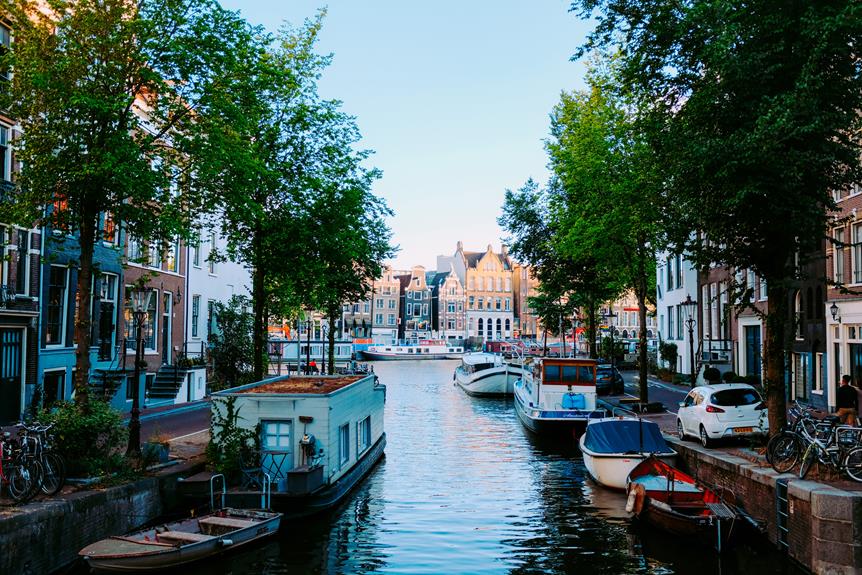Habiganj District, situated in Bangladesh, is a treasure trove of historical significance and prehistoric settlements. From the ancient civilizations that once thrived here to the battles fought on its soil, Habiganj holds secrets waiting to be unearthed. With mentions in ancient texts and its establishment as a separate district, this region has a story to tell. But it doesn't stop there. Demographic changes, geographical features, and natural resources all contribute to the allure of this district. So, join me as we embark on a journey to explore the intriguing past and present of Habiganj District, a place where history and mystery intertwine.
Prehistoric Settlements and Fossil Artifacts
The exploration of Habiganj District's rich history unveils intriguing prehistoric settlements and the discovery of fossil artifacts, shedding light on the ancient inhabitants and their way of life. The district boasts prehistoric settlements in notable locations such as the Chaklapunji tea garden and Balu Stream, where remnants of early human habitation have been found. These settlements hold significant cultural importance as they provide valuable insights into the lives and activities of the people who lived in this region thousands of years ago. Additionally, the discovery of fossil wood artifacts in Lalmai and Comilla further adds to the archaeological significance of Habiganj District. These findings, classified into pre-neolithic and neolithic assemblages, contribute to our understanding of the region's ancient past and the cultural practices of its early inhabitants.
Medieval Kingdoms and Historical Battles
During the medieval period, Habiganj District was home to various petty kingdoms and witnessed significant historical battles that shaped its political landscape. These medieval kingdoms were engaged in power struggles and territorial disputes, leading to fierce battles that determined their dominance. To provide a clear overview, the following table highlights some of the notable medieval kingdoms and historical battles in Habiganj District:
| Medieval Kingdoms | Historical Battles |
|---|---|
| Tungachal | Capture of Tungachal by Syed Nasiruddin in 1304 |
| Azmardan Raj | Invasion of Azmardan Raj by Malik Ikhtiyaruddin Iuzbak in 1254 |
| Baniachang House | Control of Taraf passing to Baniachang House |
| Tripura | Battle of Jilkua between Syed Musa and the King of Tripura in 1581 |
These battles not only determined the political landscape of Habiganj District but also influenced the power dynamics and territorial control of the region. The outcomes of these conflicts shaped the subsequent governance and administration of the district, leaving a lasting impact on its historical narrative.
Habiganj's Significance in Ancient Texts
Habiganj's significance in ancient texts can be traced back to its mention in the Hindu epic Mahabharata, highlighting its historical and cultural importance. According to ancient texts, Duryodhana, one of the main characters in the Mahabharata, had a connection to Habiganj through his marriage into a family from the region. This association further emphasizes the district's presence in ancient narratives. Moving forward in history, Habiganj also holds significance in the political realm. It is worth noting that Habiganj was represented in the Indian National Congress in 1886, showcasing the district's involvement in the political landscape during the colonial period. These references in ancient texts and political representation underscore the rich historical and cultural heritage of Habiganj.
Establishment and Evolution of Habiganj District
Habiganj District's historical significance extends beyond its mention in ancient texts, as it also encompasses the establishment and evolution of the district itself. The establishment timeline of Habiganj District is as follows:
- Habiganj was initially established as a Thana in 1790 during the Mughal Bengal period.
- In 1886, Habiganj gained representation in the Indian National Congress, showcasing its political significance.
- In 1911, Habiganj rejoined East-Bengal after being separated from it during British rule.
- Habiganj played a pivotal role in the Mukti Bahini guerrilla movement, which aimed to liberate Bangladesh from Pakistani occupation.
The cultural heritage of Habiganj District has evolved over time, influenced by various historical events and the diverse communities residing in the region. This heritage includes ancient prehistoric settlements, mentioned in texts like the Mahabharata, as well as the contemporary demographics, religious composition, and economic activities that shape the district today.
Demographic Insights of Habiganj District
The demographic landscape of Habiganj District provides valuable insights into its population growth, religious composition, and socio-economic characteristics. In terms of population growth trends, Habiganj District has witnessed a steady increase in its population over the years. According to the 2022 Census of Bangladesh, the district's population has grown significantly since 1974. Additionally, the district's religious diversity is worth noting. In 2011, the religious composition of Habiganj District included a mix of Muslims, Hindus, Buddhists, and Christians. A comparison with 1941 data reveals changes in religious demographics over time. These demographic insights shed light on the dynamic nature of Habiganj District's population and highlight the importance of considering religious diversity in understanding its socio-cultural dynamics.
Geography and Natural Resources of Habiganj
Located in the northeastern part of Bangladesh, Habiganj District boasts a diverse geography and abundant natural resources that contribute to its economic growth and ecological significance. The district is characterized by alluvial plains, rivers, streams, lakes, and fertile alluvial soils. However, Habiganj is also vulnerable to natural disasters, including floods and droughts. The district covers an area of 2,636.58 square kilometers, with cultivated agricultural land accounting for 60.22% of the total agricultural land. Forestland covers 4.53% of the total land, providing valuable ecological services. Habiganj is crossed by several rivers, including the Barak, Bheramahana, Kalni, Kushiara, and Meghna River. Moreover, the district is rich in natural resources, such as tea gardens covering a total area of 15,703.24 hectares, rubber gardens, and gas fields with substantial reserves. To support the utilization and management of these resources, Habiganj also has a well-developed transportation infrastructure.
Agricultural and Industrial Landscape of Habiganj
With its fertile alluvial soils and diverse agricultural practices, Habiganj District in Bangladesh is a thriving hub for both agricultural and industrial activities, contributing significantly to the region's economic growth. The district's agricultural development is evident in its cultivation of various crops, including rice, jute, tea, vegetables, and fruits. Rice, being the staple crop, occupies the majority of cultivated land. Additionally, the district is home to 24 tea gardens, covering a vast area and contributing to the country's tea production. Habiganj's industrial growth is also noteworthy, with the presence of rubber gardens and gas fields. The district hosts the Rashidpur, Bibiana, and Habiganj gas fields, which have substantial gas reserves. Commercial gas production from the Habiganj gas field began in 1968, further enhancing the industrial landscape of the district. The combination of agricultural development and industrial growth in Habiganj District has played a crucial role in driving the region's economic prosperity.
Gas Fields and Energy Resources in Habiganj
Building on the thriving agricultural and industrial landscape in Habiganj District, the presence of gas fields and abundant energy resources has significantly contributed to the region's economic growth and energy sustainability. The district is home to several gas fields, including the Rashidpur gas field, Bibiana gas field, and Habiganj gas field, with a total approximate stock of 5.5 Trillion Cubic Feet. The Habiganj gas field alone has a total recoverable gas reserve of 3,852.30 billion cubic feet. This abundance of gas resources has attracted significant investment in gas exploration and energy development in the region. The commercial production of gas from the Habiganj gas field started in 1968, further boosting the district's energy sector. The presence of these gas fields has not only facilitated economic growth but has also contributed to the energy sustainability of the district and the country as a whole.
Frequently Asked Questions
What Is the Current Population of Habiganj District and How Has It Changed Over the Years?
The current population of Habiganj District and its changes over the years are of great interest. The demographic changes in the district have been significant, with a noticeable growth in population from 1974 to 2022. The data from the 2022 Census of Bangladesh provides valuable insights into the household and population statistics in Habiganj District. Analyzing the population growth and other demographic indicators will shed light on the dynamics and trends of this region.
What Is the Main Economic Activity in Habiganj District?
The main economic activity in Habiganj District is agriculture, with cultivated agricultural land covering 60.22% of the total agricultural land. The district is known for its fertile alluvial soils and is home to 24 tea gardens, covering a total area of 15,703.24 hectares. Additionally, there are three rubber gardens in the district. Habiganj is also rich in natural gas reserves, with the Habiganj gas field alone having a total recoverable gas reserve of 3,852.30 billion cubic feet. These industries contribute significantly to the district's economy.
What Are the Major Rivers That Flow Through Habiganj District?
The major rivers that flow through Habiganj District are Barak, Bheramahana, Gopala, Kalni, Kalishiri, Khowai, Korangi, Kushiara, Meghna River (lower), Ratna, Shwasanali, shutki, sonai, Korangi, Shutang, Tentulia, Jhingri, Bizna, Yojnal, and Lohor. These rivers play a crucial role in the geographical and economic landscape of the district. They provide water for irrigation, transportation, and support the diverse flora and fauna of the region. Additionally, they have cultural significance and have been mentioned in historical texts and folklore.
How Many Tea Gardens Are There in Habiganj District and What Is Their Total Area?
There are a total of 24 tea gardens in Habiganj district, covering a combined area of 15,703.24 hectares. These tea gardens play a significant role in the district's economy and are a major source of employment for the local population. The cultivation and production of tea in Habiganj district contribute to the overall agricultural landscape and add to the district's rich history and cultural heritage. Additionally, the presence of these tea gardens also attracts tourists and promotes the development of the tourism industry in the region.
When Did Commercial Gas Production Start in the Habiganj Gas Field?
Commercial gas production in the Habiganj gas field started in 1968. This has had a significant impact on the local community in Habiganj District, as it has contributed to the economic development of the region. The gas field, with a total recoverable gas reserve of 3,852.30 billion cubic feet, has played a crucial role in meeting the energy demands of the district and beyond. However, the extraction of gas has also presented challenges and raised concerns about environmental sustainability and the well-being of the local population.





